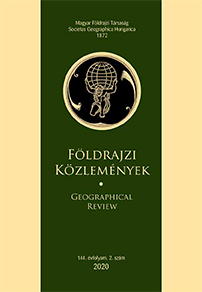An Analysis of The Sinuosity Index of Stream Channels in the Bükkalja Structural Geological Causes and Conclusions
Abstract
Rivers react relatively quickly to epirogenetic movements. This is also confirmed through laboratory experiments (Ouchi, S. 1985; Marple, R. T. – Talwani, P. 1993; Twidale, P. 1996, 2004). Many river-related surface-forming processes and forms are used for studying fault activity, for example: channel formation, channel braided, variation of channel width, change of channel depth and river terraces (etc.). However, these processes and forms can be caused by climate change, so the form alone does not prove the structural activity of the area (Schumm , S. A. 1986, 2005; Pinter, N. C. 1996; Petrovszki J. 2013). Such morphological change is the development of river sinuosity, which is often used to justify the activity of faults. Several Hungarian and foreign researchers have been investigating this phenomenon, but have mainly examinied larger rivers. The purpose of this work is to examine the sinuosity of the Bükkalja creeks. I tested and refined the procedure associated with scaling in order to explain the possible causes of changes in the sinuosity of the creeks.
Copyright (c) 2020 Péter Pecsmány

This work is licensed under a Creative Commons Attribution-NonCommercial-NoDerivatives 4.0 International License.



